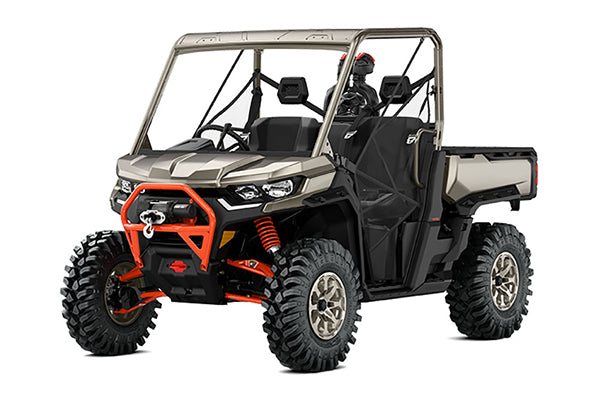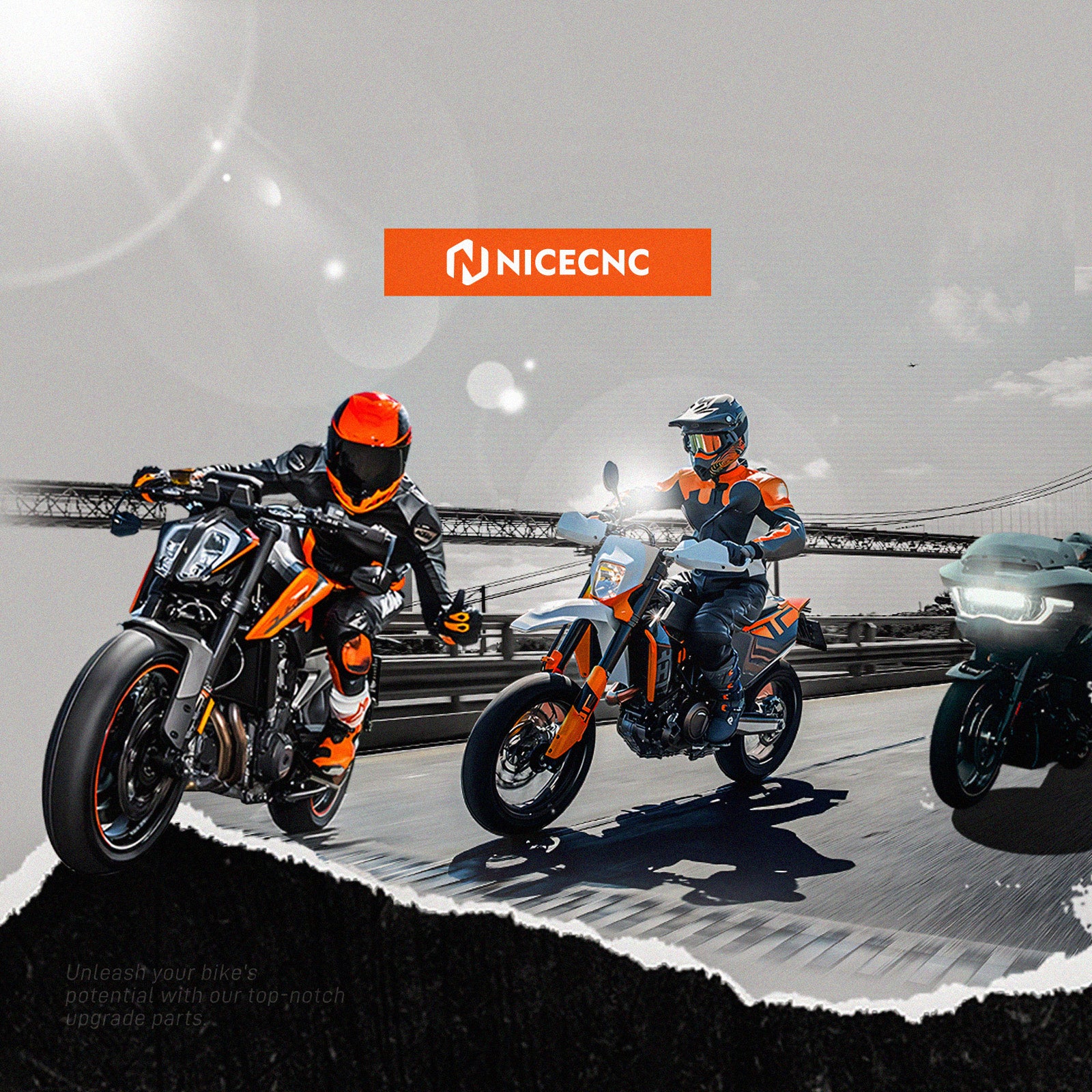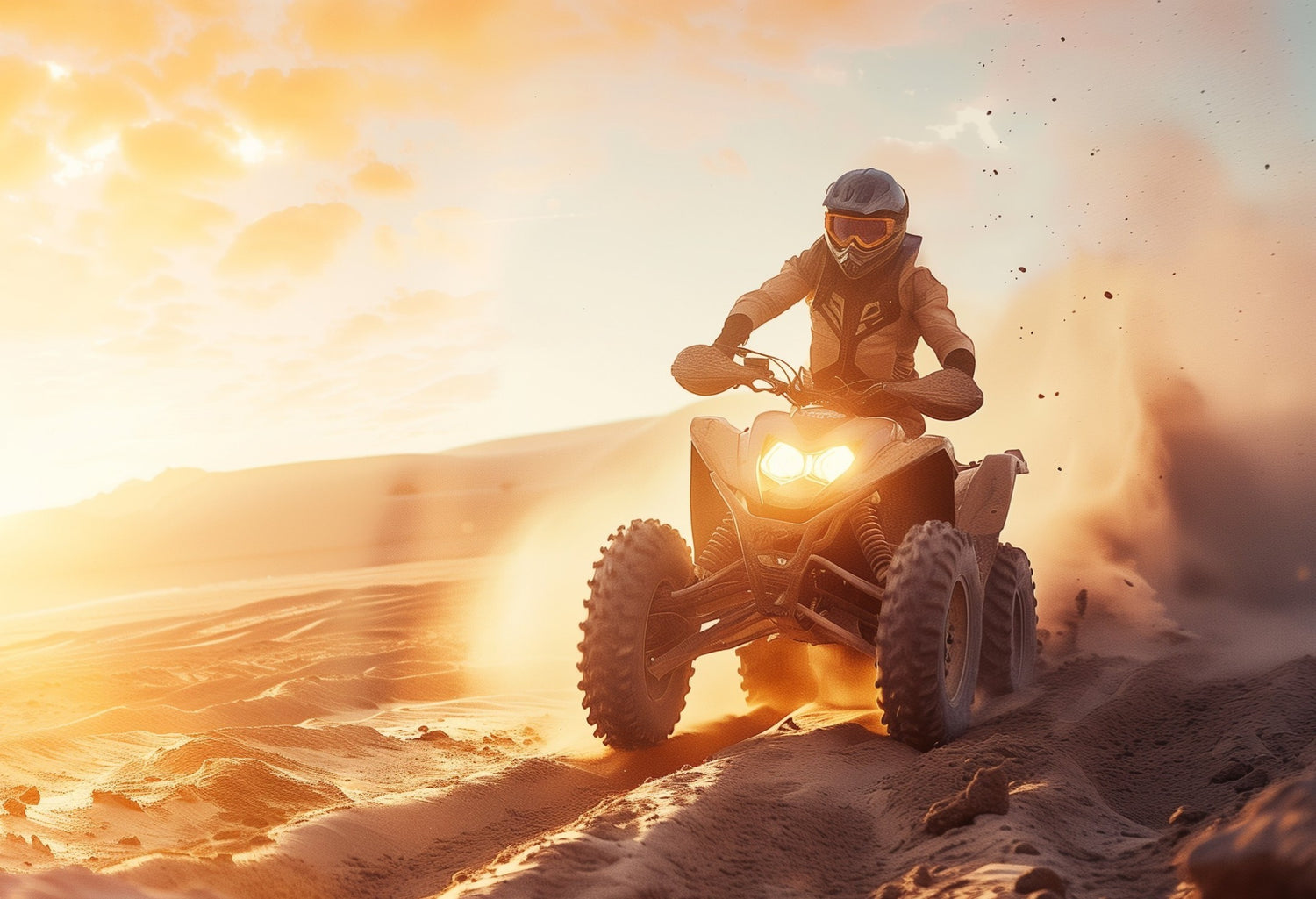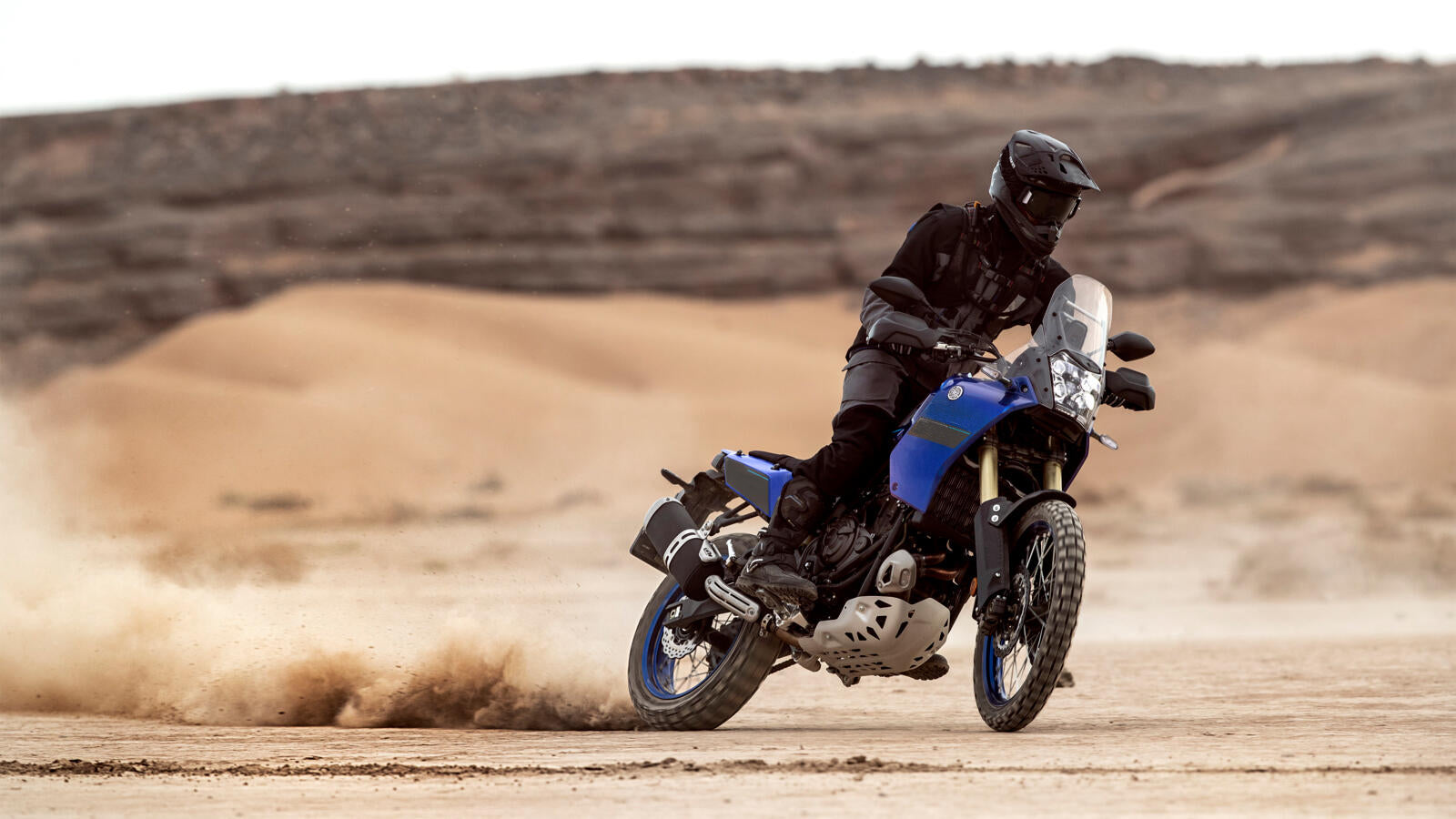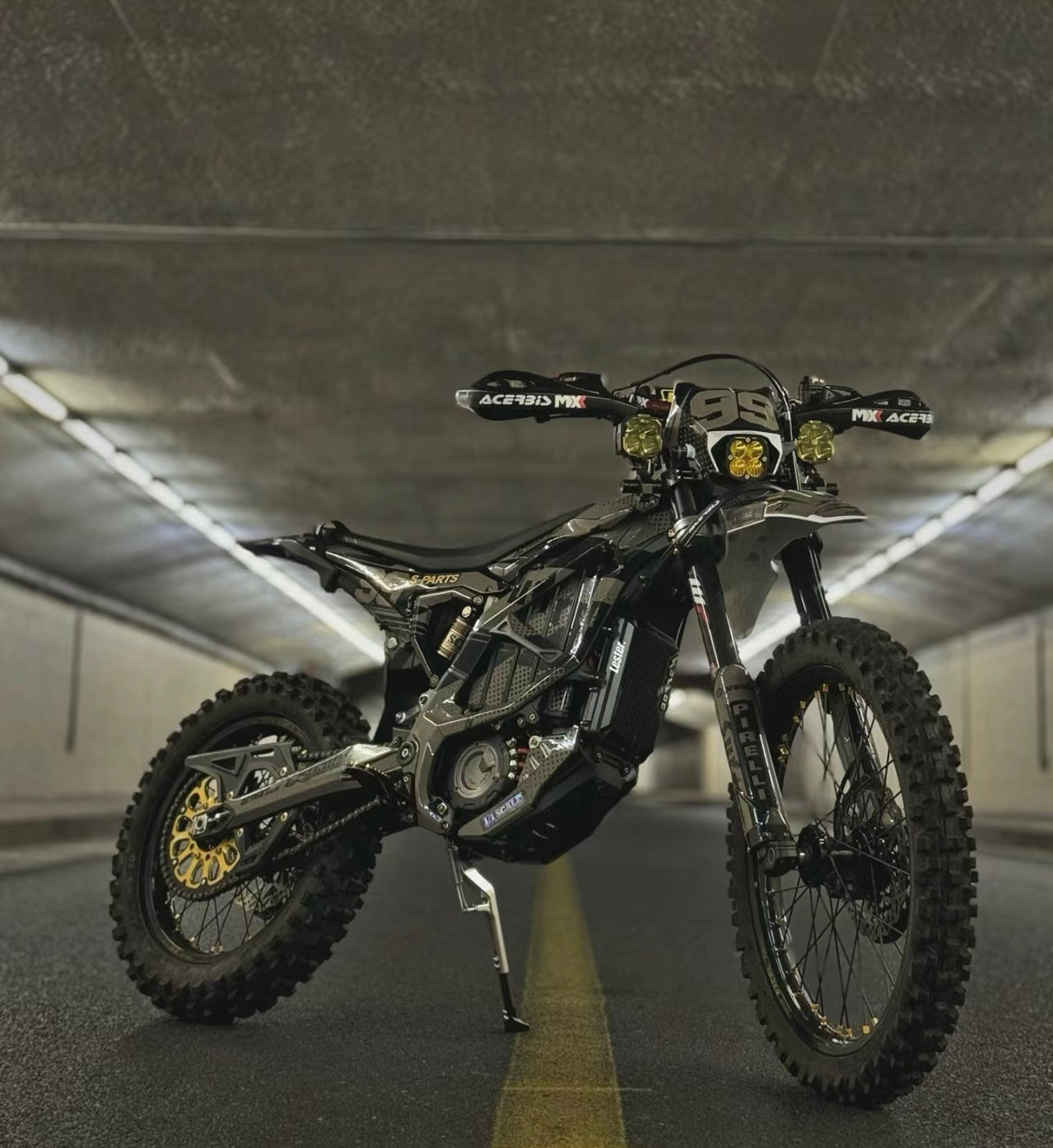As the summer sun blazes and off-road enthusiasts hit the trails, ATV overheating becomes a common concern. Whether you're conquering rocky terrain or cruising through dusty paths, keeping your ATV's engine cool is crucial for optimal performance and longevity. In this guide, we'll dive deep into the world of ATV overheating, exploring how to recognize the signs, understand the causes, and implement effective solutions to keep your ride running smoothly even in the hottest conditions.
How to Recognize ATV Overheating?
Recognizing the signs of overheating is the first step in preventing potential damage to your ATV engine. Here are some key indicators to watch out for:
1. Temperature gauge reading: Most modern ATVs come equipped with a temperature gauge on the dashboard. If you notice the needle creeping into the red zone or beyond the normal operating range, it's a clear sign that your ATV is overheating.
2. Steam or smoke: If you see steam or smoke rising from under the hood or around the engine area, it's a strong indication that your ATV is overheating. This is often accompanied by a distinct burning smell.
3. Unusual engine sounds: Listen for any knocking, pinging, or rattling sounds coming from the engine, as these can be symptoms of overheating.
4. Hot plastic smell: If you detect a strong odor of hot plastic, it could mean that components near the engine are melting due to excessive heat.
5. Engine shutdown: In extreme cases, some ATVs have a built-in safety feature that shuts down the engine to prevent severe damage from overheating.

What Will Cause Your ATV Overheating?
Understanding the root causes of ATV overheating is essential for effective prevention and troubleshooting. Here are some common culprits:
1. Low coolant levels: Insufficient coolant in the radiator or overflow tank can lead to inadequate heat dissipation.
2. Radiator issues: A clogged, damaged, or poorly functioning radiator can't effectively cool the engine.
3. Faulty water pump: If the water pump isn't circulating coolant properly, it can cause localized hot spots in the engine.
4. Thermostat problems: A stuck or malfunctioning thermostat can prevent proper coolant flow.
5. Air bubbles in the cooling system: Trapped air can create hot spots and reduce cooling efficiency.
6. Clogged cooling fins:Dirt, mud, or debris buildup on the cooling fins can impair heat dissipation.
7. Fan issues: A non-functioning or inefficient cooling fan can lead to inadequate airflow over the radiator.
8. Extreme ambient temperatures: Riding in very hot conditions can push your ATV's cooling system to its limits.
9. Overloading: Carrying excessive weight or towing beyond your ATV's capacity can cause the engine to work harder and generate more heat.
10. Incorrect oil levels or type: Using the wrong oil or having low oil levels can contribute to overheating.

How to Improve Your ATV Engine Cooling System?
Now that we've identified potential causes, let's explore ways to enhance your ATV's cooling system and keep your ATV running cool. (atv parts here)
1.Regular maintenance:
Regular maintenance is the cornerstone of a well-functioning cooling system. Here's what you need to focus on:
a) Flush and refill coolant: Over time, coolant can become contaminated or lose its effectiveness. Flush your cooling system and refill it with fresh coolant according to your manufacturer's recommendations, typically every 2 years or 50 operating hours, whichever comes first.
b) Inspect and clean the radiator and cooling fins: Use a garden hose or a specialized radiator cleaning solution to remove dirt, mud, and debris from the radiator. For stubborn buildup, use a soft brush, being careful not to damage the delicate fins. Consider using a fin comb to straighten any bent cooling fins.
c) Check and replace the thermostat: A faulty thermostat can cause significant cooling issues. Test your thermostat's functionality by removing it and placing it in hot water to see if it opens at the specified temperature. Replace it if it's not working correctly or every 2-3 years as preventive maintenance.
d) Ensure the water pump is functioning correctly: Listen for any unusual noises coming from the water pump area. Check for coolant leaks around the pump and ensure the impeller isn't worn or damaged. If you suspect issues, have a professional inspect and, if necessary, replace the water pump.
2.Upgrade your radiator:
A high-performance radiator can significantly improve your ATV's cooling capacity. Consider these options:
a) Larger radiator: Look for a radiator with increased core size or surface area. A larger radiator can dissipate heat more effectively, keeping your engine cooler during intense rides.
b) Aluminum vs. copper-brass: While copper-brass radiators have excellent heat transfer properties, aluminum radiators are lighter and more resistant to corrosion.
c) Increased core thickness: A thicker radiator core provides more surface area for heat dissipation. Look for radiators with multiple rows or increased fin density for better cooling performance.
3.Enhance airflow:
Improving airflow around your engine and radiator can significantly boost cooling efficiency:
a) Install a more powerful cooling fan: Upgrade to a high-performance electric fan that can move more air across the radiator. Look for fans with higher CFM (cubic feet per minute) ratings.
b) Add an auxiliary fan: Installing a secondary fan can provide additional cooling, especially useful in slow-speed or stationary situations.
c) Improve ventilation: Modify your ATV's body panels to increase airflow to the radiator. This could involve adding vents, louvers, or even removing certain panels (if safe and legal to do so).
d) Relocate the radiator: Some riders opt to move the radiator to a higher position on the ATV, away from mud and debris. This can improve both airflow and protection from trail hazards.
4.Use a high-quality coolant:
The right coolant can make a significant difference in your ATV's cooling performance:
a) Choose ATV-specific coolant: Look for coolants designed explicitly for off-road vehicles. These often have additional corrosion inhibitors and can withstand higher temperatures.
b) Proper mixture ratio: Follow the manufacturer's recommendations for the coolant-to-water ratio. In most cases, a 50/50 mix is ideal, but some high-performance coolants may require different ratios.
5.Install an oil cooler:
An oil cooler can help maintain lower overall engine temperatures:
a) Types of oil coolers: Choose between air-cooled (with fins) or liquid-cooled (integrated into the radiator system) oil coolers based on your ATV's design and your riding needs.
b) Sizing: Select an oil cooler appropriate for your engine size and riding conditions. Larger isn't always better, as an oversized cooler can cause the oil to become too cool in some situations.
c) Location: Mount the oil cooler in a spot with good airflow, away from direct impact from rocks or debris. Some popular locations include in front of the radiator or near the frame rails.
6.Upgrade your water pump:
A high-flow water pump can significantly improve coolant circulation:
a) Increased impeller size: Look for pumps with larger impellers that can move more coolant through the system.
b) Higher flow rate: Choose a pump with a higher gallons-per-minute (GPM) rating for improved cooling efficiency.
c) Durability: Opt for pumps made from high-quality materials like billet aluminum for increased longevity and performance.
7.Add a radiator catch can:
A catch can helps maintain proper coolant levels during intense riding:
a) Size and capacity: Choose a catch can that's appropriately sized for your ATV and riding style. Larger capacities are beneficial for more aggressive riding.
b) Material: Look for catch cans made from durable materials like aluminum or high-strength plastics that can withstand high temperatures and impacts.
c) Mounting location: Install the catch can in a easily accessible location for quick checks and refills, but also protected from trail hazards.
8.Use thermal wraps:
Wrapping exhaust components can help manage heat:
a) Exhaust wrap: Apply high-temperature exhaust wrap to your headers and exhaust pipes. This helps contain heat and prevents it from radiating to nearby components.
b) Heat shields: Install heat shields around particularly hot areas of the engine or exhaust system to protect other components and reduce overall heat buildup.
c) Reflective coatings: Consider applying reflective coatings to surfaces near hot components to help deflect heat away from sensitive areas.
9.Consider engine tuning:
Proper engine tuning can optimize performance and reduce excess heat generation:
a) Fuel mapping: Work with a professional to adjust your ATV's fuel mapping for optimal fuel efficiency and reduced heat production.
b) Ignition timing: Fine-tuning the ignition timing can help the engine run more efficiently, potentially reducing heat output.
c) Air/fuel mixture: Ensuring the correct air/fuel mixture can prevent the engine from running too lean, which can cause overheating.
10.Install temperature monitoring devices:
Additional monitoring can help you stay ahead of potential overheating issues:
a) Digital temperature gauges: Install a more precise digital temperature gauge for real-time monitoring of engine and coolant temperatures.
b) Infrared temperature sensors: Use non-contact infrared sensors to monitor temperatures at specific points on your engine or exhaust system.
c) Data logging systems: For the tech-savvy rider, a data logging system can provide comprehensive temperature data for analysis and optimization.
By implementing a combination of these cooling system improvements, you can significantly enhance your ATV's ability to manage heat, even in the most demanding conditions. Remember, the key is to tailor these solutions to your specific ATV model, riding style, and the environments you typically encounter.

Would Riding an ATV in the Water Be Good for Cooling?
While it might seem logical that riding through water could help cool your ATV, this approach comes with several risks and considerations:
Pros:
1. Temporary cooling effect: Riding through water can provide a quick cooling effect for the engine and components.
2. Cleaning action: Water can help rinse off mud and debris from the radiator and cooling fins.
Cons:
1. Electrical damage: Water can potentially damage electrical components if not properly sealed.
2. Hydrolocking: If water enters the engine through the air intake, it can cause severe engine damage.
3. Inconsistent cooling: Relying on water crossings for cooling is unpredictable and not a sustainable solution.
4. Contamination: Dirty or muddy water can introduce contaminants into the cooling system.
5. Belt slippage: For ATVs with CVT transmissions, water can cause belt slippage and reduced performance.

During a trail ride, you may come across a shallow stream. While the cool water might provide temporary relief for your ATV's engine, it's important to approach water crossings with caution. Instead of relying on water for cooling, focus on maintaining your ATV's cooling system and using proper riding techniques to manage engine temperature. If you do need to cross water, follow the best practices:
- Install a snorkel kit to raise the air intake.
- Use waterproof electrical connectors and seal vulnerable components.
- Check your owner's manual for the maximum recommended water depth.
- Maintain a steady speed when crossing water to create a bow wave.
- Inspect and clean your ATV thoroughly after water crossings.

Q&A
Q1: How often should I check my ATV's coolant levels?
A1: It's recommended to check your ATV's coolant levels before each ride, especially during hot weather. Make it a part of your pre-ride inspection routine along with checking oil levels and tire pressure.
Q2: Can I use automotive coolant in my ATV?
A2: While automotive coolant can work in a pinch, it's best to use coolant specifically designed for ATVs or off-road vehicles. These coolants are formulated to withstand the unique demands of ATV engines and often provide better corrosion protection.
Q3: Is it normal for my ATV to run hot in slow, technical riding?
A4: Yes, it's common for ATVs to run hotter during slow, technical riding due to reduced airflow over the radiator. To mitigate this, try to alternate between slow technical sections and areas where you can move faster to increase airflow.
Q4: How can I tell if my ATV's thermostat is stuck?
A5: Signs of a stuck thermostat include rapid overheating, large temperature fluctuations, or the engine taking too long to reach operating temperature. You can test the thermostat by removing it and placing it in hot water to see if it opens at the specified temperature.
In conclusion, managing your ATV's temperature is crucial for ensuring optimal performance and longevity, especially during hot summer rides. Remember, regular maintenance and proactive upgrades are key to keeping your engine cool and your rides exciting! Thank you for reading!



